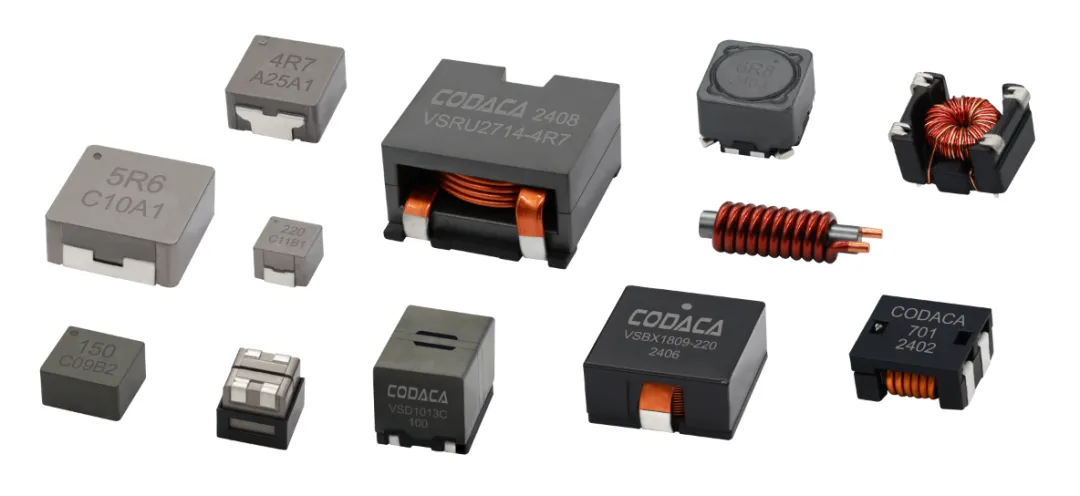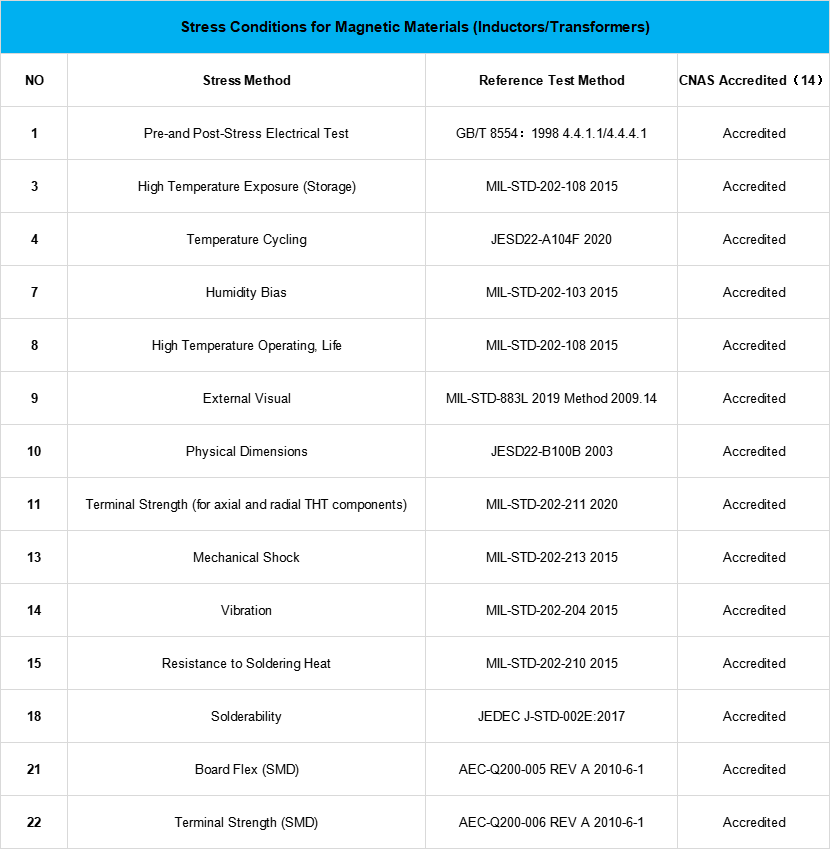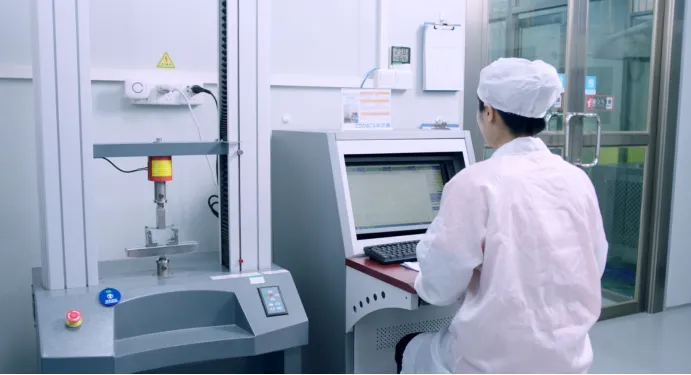Unlike ordinary industrial products or consumer electronics, automotive products operate in complex environments and are closely tied to human safety. As a result, the automotive industry has extremely strict quality control requirements for components. For component manufacturers seeking to enter the automotive electronics market, two “tickets” are essential: first, the quality management system must be certified to IATF16949 to ensure customers receive consistent, high-quality products and services; second, all products manufactured and sold must pass AEC-Q200 testing to guarantee the high quality and safety of automotive electronic products. Today, we will focus on introducing the AEC-Q200 testing that is widely discussed in the industry.

1- What is AEC-Q200 Testing?
AEC-Q200 is a quality and reliability validation standard established by the Automotive Electronics Council (AEC) for passive components used in automotive applications. AEC-Q200 certification verifies that passive components meet automotive-grade quality requirements.
The AEC-Q200 standard applies to products including tantalum and ceramic capacitors, aluminum electrolytic capacitors, film capacitors, magnetic devices (inductors/transformers), networks (R-C/C-R), resistors, thermistors, variable capacitors/resistors, varistors, ferrite EMI suppressors/filters, quartz crystals, ceramic resonators, polymer resettable fuses, and other passive components.
It is worth noting that on March 20, 2023, the AEC revised the automotive passive component specification AEC-Q200 Rev. June 1, 2010. The latest version, AEC-Q200 Rev. E, expands the applicable passive component categories from 14 to 16, adding niobium capacitors, fuses, supercapacitors, and trimmer resistors.
From the applicable product categories defined in the AEC-Q200 standard, it is clear that inductors are explicitly classified and have specific testing method guidelines, as shown in Table 5: Stress Qualifications for Magnetic (Inductors/Transformers).

Automotive-Grade Inductors Compliant with AEC-Q200 Standard
2- AEC-Q200 Test Items
AEC-Q200 contains a total of 28 test items, but not all products are subject to every test. The specific tests required and the number of samples needed vary depending on the product type. For magnetic devices (inductors/transformers), the applicable AEC-Q200 Table 5 test items include the following 18:
(1)Pre- and Post-Stress Electrical Test
(2)High Temperature Exposure (Storage)
(3)Temperature Cycling
(4)Humidity Bias
(5)High Temperature Operating Life
(6)External Visual
(7)Physical Dimensions
(8)Terminal Strength (for axial and radial THT components)
(9)Resistance to Solvents
(10)Mechanical Shock
(11)Vibration
(12)Resistance to Soldering Heat
(13)ESD
(14)Solderability
(15)Electrical Characterization
(16)Flammability
(17)Board Flex (SMD)
(18)Terminal Strength (SMD)
Among these, certain tests are not applicable to inductors. For example:
◾ Resistance to Solvents applies to ink-marked components, but not to laser-marked components. Since automotive-grade inductors use laser marking, this test is not applicable.
◾ ESD (Electrostatic Discharge) testing is not required for inductive components.
◾ Flammability testing mainly applies to components with exposed cured resin or plastic materials. Inductors, whose core materials are metallic magnetic cores and copper wires, do not require this test.

Table 1: CODACA CNAS Laboratory Accredited AEC-Q200 Table 5 Test Items
CODACA Electronics has obtained CNAS accreditation for 14 AEC-Q200 Table 5 test items, ranking among the top in the industry in terms of the number of accredited tests.
3- Significance of AEC-Q200 Testing
From the above introduction, it can be seen that AEC-Q200 evaluates whether passive components used in automotive electronics can withstand the rigorous demands of the vehicle environment through parameter testing, environmental stress testing, and process quality assessment. For automakers and Tier-1 suppliers, using electronic components that have passed AEC-Q200 testing carries lower risk. For electronic component suppliers, obtaining an AEC-Q200 certificate serves as a guarantee of product quality and reliability.
Although AEC-Q200 is not yet a mandatory requirement, it has already been widely recognized as the global standard for testing automotive electronic components. It has become an important benchmark and threshold for assessing the suitability of electronic components for automotive applications.
4- Key Considerations in AEC-Q200 Testing
4.1 Can Non-Automotive Components Be Used to Replace Automotive-Grade Components?
Currently, there are still relatively few domestically produced in-vehicle components that have fully passed AEC-Q200 testing. Some users, considering cost factors, may choose to directly use industrial-grade products instead of automotive-grade components. From the perspective of automotive operational safety, CODACA does not recommend this approach, as there are significant differences between industrial-grade and automotive-grade products in terms of material selection, temperature resistance, vibration resistance, and product lifespan.
All CODACA automotive-grade inductors have passed the stringent AEC-Q200 tests, with some products meeting the highest temperature grade of AEC-Q200, Grade 0 (operating temperature -55°C to +165°C).
With 24 years of expertise in inductor development, CODACA is committed to providing the automotive industry with high-quality, high-reliability automotive-grade inductors. CODACA’s automotive-grade inductors are manufactured in factories fully certified to the IATF 16949 quality management system. The company also operates a CNAS-accredited laboratory capable of conducting independent testing in accordance with the AEC-Q200 validation standards for passive components.

4.2 Has Comprehensive AEC-Q200 Testing Been Achieved?
Although the industry has recognized the importance of the AEC-Q200 standard in ensuring the safety and stable operation of automotive electronic products, most component suppliers lack in-house testing capabilities and must rely on third-party laboratories for outsourced testing.
Since AEC-Q200 testing is time-consuming and costly, with a single project often costing tens of thousands of RMB, some suppliers, due to cost considerations, may only apply for and pass one or a few test items and then claim to have passed AEC-Q200, when in reality their compliance covers only those limited items. For example, test items such as Humidity Bias, High Temperature Exposure, and High Temperature Operating Life require 1,000 hours of testing, which involves significant cost and manpower.
In contrast, CODACA has applied for as many as 14 AEC-Q200 test items. Excluding a few items not applicable to automotive-grade inductors, CODACA’s AEC-Q200 testing scope covers all reliability test items for inductive components, achieving truly comprehensive AEC-Q200 testing.
4.3 Enterprise Qualification Review and Verification of AEC-Q200 Test Reports
Faced with the strong demand for inductors in the automotive electronics industry, many companies are eager to enter the market. However, some enterprises lack the R&D capabilities and production conditions for automotive electronic products, and instead purchase products that have not undergone AEC-Q200 testing. This makes it necessary for customers to carefully distinguish suppliers and, whenever possible, choose large-scale, well-established manufacturers with independent development capabilities.
Users can evaluate a manufacturer’s strength by reviewing its qualifications, quality management system, and company scale, as well as conducting performance testing on its products to ensure stable and reliable operation. Visiting the supplier’s factory for on-site inspection is also an effective way to gain a close-up understanding of the company’s overall capabilities.